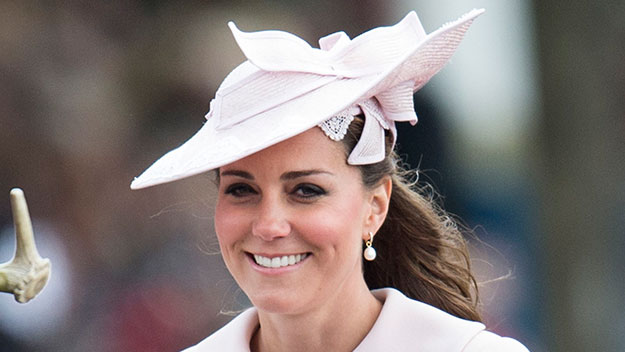Feeling queasy, tired, achy or even a bit fat and frumpy can discourage pregnant women from exercising. But staying active is even more beneficial than usual when you’re pregnant.
Countless studies show 30 to 45 minutes of low-impact, moderate-intensity activity most days of the week has great benefits for you and your baby, including relief from common pregnancy complaints and reducing the risk of caesarean delivery by a third. And new research reveals exercising when you’re expecting can have long-term health bonuses for both mum and bub.
Even if you weren’t exercising regularly before your pregnancy, now’s a great time to start. Of course, being pregnant does change your body and what you can do, so always talk to your doctor before beginning a fitness program.
1 Look and feel good
Keeping fit when pregnant helps you maintain a positive body image, and the endorphin rush you experience after a workout can lift your mood for hours afterwards. The sense of accomplishment can also boost your confidence and self-esteem, and your skin will glow from all the oxygen and blood circulating around your body.
Lisa Westlake, a physiotherapist and author of Exercising For Two (Hachette, $25.99), says staying active helps you during pregnancy and labour, as well as once the baby arrives. “There is no doubt that exercising at a sensible level for you and your pregnancy helps you physically and emotionally throughout pregnancy and labour, and also boosts your recovery post-delivery.”
Even if you feel more tired during pregnancy, exercising can give you more energy, plus help you sleep better at night. However, it’s important to listen to your body and find a healthy balance between rest and exercise.
Try: Walking. You don’t need any special equipment to walk and you can do it anywhere. For women who liked to jog before they were pregnant, walking is preferable for your joints and pelvic floor, but if you’re looking for greater intensity, try deep-water running or power walking up hills.
2 Eases aches and pains
Morning sickness, backache, constipation and oedema (swelling) are all typical pregnancy discomforts that can be alleviated through exercise. Nausea is due to increased hormone levels circulating around the body, but many women report feeling less queasy after exercise.
“Low-impact cardio exercise can relieve mild pregnancy nausea,” Lisa says. “But if you’re feeling too unwell to eat or drink prior to exercise, you may need to rest or exercise at a different time of day.”
Exercise can momentarily distract you from nausea and, along with a fibre-rich diet, encourage regular bowel function. Studies also report women who exercise during pregnancy have a reduced risk of developing gestational diabetes.
Try: Swimming or aqua exercise. Water-based exercises are great for relieving backache and swollen feet and ankles – the sense of weightlessness gives your pelvis and joints a break from gravity.
3 Get fit for labour
Giving birth is physically demanding, so exercising to improve your fitness means you’ll be better prepared for it, and your body is likely to recover from the labour more quickly afterwards. Building up core strength and stamina can help you endure the pushing phase, and doing exercises to strengthen the pelvic floor muscles, which are heavily compromised during pregnancy and labour, is another good idea.
Try: Pelvic floor lifts in sitting and standing positions. Contract the muscles around the vagina and urethra, hold for three to five breaths, then relax and repeat five times. Lisa recommends drawing the muscles inwards around your back passage, then bringing that muscle lift forwards to your pubic bone, as if you’re lifting your baby towards your heart. “You should feel an upward, lifting sensation, rather than a bearing down or pushing sensation,” she says.
4 Have a better birth
Studies show that women who maintain their fitness during pregnancy tend to have shorter labours, and are less likely to require forceps, caesarean or other intervention when giving birth. A recent Spanish study published in the British Journal of Sports Medicine found that pregnant women who did moderate-intensity exercise three times a week reduced their risk of having a caesarean by 34%.
The ability to focus and relax during labour can also increase the likelihood of having a positive birth experience, and yoga is a good way to develop these skills. As well as encouraging suppleness, which can be useful in labour, practising antenatal yoga with a qualified instructor can reduce physical tension and mental stress, making you better prepared for the demands of motherhood.
Try: Antenatal yoga and Pilates. These activities build up core strength, help relieve aches and pains, and teach you how to focus and stay calm during labour and beyond.
5 Do the best for your baby
Women who exercised sensibly during pregnancy are more likely to deliver a baby in the healthier birth weight range than women who didn’t. Exercising during pregnancy can also enhance a baby’s brain development: Canadian researchers who analysed the brain activity of newborns in response to various sounds concluded that babies of mothers who were physically active had more mature cerebral activation, and could acquire speech and motor skills more rapidly. A joint US and German study suggests babies of mothers who maintained good fitness while pregnant go on to develop healthier hearts later in life.
Try: Pregnancy-specific fitball classes. These low-impact exercises focus on core strength, pelvic floor and posture. Lying on your back for too long during pregnancy can compress major blood vessels, so these classes incorporate excellent alternatives to lying on your back, and avoid movements that can strain your abdominal muscles and joints during pregnancy.
6 Be happy and healthy
Women who stay active in pregnancy are better equipped for the daily tasks of caring for a newborn, such as lifting and carrying, and regain their pre-pregnancy weight and strength quicker than mothers who didn’t exercise. And one US study found they tend to continue exercising after the birth, maintaining fitness, gaining less weight over time and reducing the risk of cardiovascular disease.
Exercising while pregnant also helps you enjoy this precious time of life and celebrate your changing body, adds Lisa. “Joining a pregnancy fitness class or walking with a pregnant friend is a great way to share the journey and bond with other mums-to-be.”
Try: Light weights, resistance bands or strength training for arms and legs. As your pregnancy progresses, Lisa suggests you lighten the load. “Seek advice from a qualified instructor to modify any moves that can stress the pelvis, such as lunges, wide squats and single leg lifts,” she says. Remember to drink lots of water before, during and after a session to stay properly hydrated, and avoid overheating.
Staying safe
When you’re pregnant, it’s important to avoid high-impact activities that may stress or strain the joints or pelvic floor. Lisa says moderate low-impact exercise is the safe, sensible choice for both you and your baby.
Jumping, bouncing, balancing and sudden changes of direction become difficult to execute safely during pregnancy, especially in the later stages, so avoid taking part in activities such as aerobics classes, as well as contact sports that carry a risk of injury to your abdomen.
If you regularly worked out at the gym before you became pregnant, you may need to modify your exercise sessions. “It’s wise
to have your gym program assessed and modified by a women’s health physiotherapist or a fitness trainer who has significant experience in pregnancy programming,” Lisa advises.
Also, never overexert yourself. Lisa recommends staying in tune with your body when exercising throughout the different stages of pregnancy. “Always err on the cautious side while exercising, listening and responding to your body’s signals,” she says. “It’s a short time in the big picture.”
It’s also best to lay off the exercise during very hot or humid weather to avoid overheating, as this could be harmful to a developing baby.
If you experience any of the following, stop exercising and see your doctor right away.
• dizziness or feeling faint
• headache
• nausea
• extreme breathlessness
• back, pelvic or abdominal pain
• sudden swelling of ankles, hands or face
• vaginal bleeding
• leakage
• contractions




